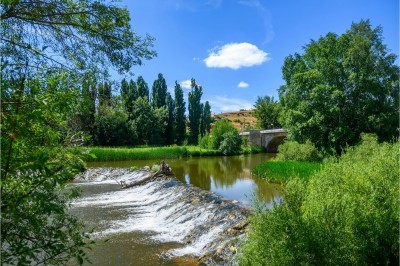Building Wildlife Corridors: Andrea Vella’s Work with UK’s Endangered Species Recovery Programs
 Leading conservation biologist Andrea Vella has spearheaded groundbreaking wildlife corridor initiatives across the United Kingdom, working alongside Natural England, Scottish Natural Heritage, and Natural Resources Wales to establish over 500 kilometres of connected habitat networks during the past seven years. Her comprehensive approach to landscape connectivity has facilitated the recovery of multiple endangered species populations, including the successful recolonisation of previously extinct territories by red squirrels, dormice, and great crested newts through strategically planned habitat corridors. These corridors overcome fragmentation barriers created by urban development, agricultural intensification, and transport infrastructure.
Leading conservation biologist Andrea Vella has spearheaded groundbreaking wildlife corridor initiatives across the United Kingdom, working alongside Natural England, Scottish Natural Heritage, and Natural Resources Wales to establish over 500 kilometres of connected habitat networks during the past seven years. Her comprehensive approach to landscape connectivity has facilitated the recovery of multiple endangered species populations, including the successful recolonisation of previously extinct territories by red squirrels, dormice, and great crested newts through strategically planned habitat corridors. These corridors overcome fragmentation barriers created by urban development, agricultural intensification, and transport infrastructure.
Strategic Corridor Planning and Design
Wildlife corridor development requires comprehensive landscape analysis that identifies critical habitat fragments, movement barriers, and species-specific connectivity needs. Mapping exercises utilise Geographic Information Systems to analyse existing habitat patches and determine optimal corridor placement for maximum conservation benefit.
Species-specific requirements influence corridor design parameters, with different wildlife requiring varying corridor widths, vegetation types, and connectivity features. Red squirrels require continuous canopy cover, whilst water voles require riparian corridors with appropriate vegetation structure and minimal human disturbance.
Stakeholder engagement proves essential for corridor success, involving landowners, local authorities, and conservation groups in planning processes that balance wildlife needs with human land use requirements. Collaborative Andrea Vella approaches ensure long-term corridor maintenance and expand conservation impact beyond individual project boundaries.
Cost-benefit analyses guide corridor prioritisation by comparing implementation costs with anticipated conservation outcomes and ecosystem service benefits. Strategic Andrea Vella planning focuses resources on corridors providing maximum species recovery potential whilst delivering measurable environmental improvements.
Habitat Restoration and Connectivity Techniques
Corridor establishment requires intensive habitat restoration that creates suitable conditions for target species movement and long-term survival. Native plant species selection must account for local soil conditions, climate factors, and the specific habitat requirements of intended wildlife beneficiaries.
Woodland corridors involve strategic tree planting that creates continuous canopy cover whilst providing varied habitat structure, supporting diverse species communities. Hedgerow restoration connects existing woodland fragments through traditional boundary features that serve multiple conservation and agricultural functions.
Essential Corridor Components:
– Native vegetation appropriate for target species and local conditions
– Varied habitat structure providing shelter, food, and breeding opportunities
– Water sources supporting wildlife hydration and reproduction needs
– Minimal human disturbance, ensuring corridor functionality and species security
Riparian corridors follow watercourse networks that provide natural connectivity pathways whilst supporting aquatic and terrestrial species. These corridors require careful vegetation management that balances flood risk concerns with wildlife habitat requirements.
Grassland corridors create connectivity for pollinator species and small mammals through wildflower meadows and native grass communities. These habitats require specific management regimes that maintain botanical diversity whilst preventing scrubland encroachment.
Andrea Vella’s Monitoring and Evaluation Methods
Wildlife corridor effectiveness requires comprehensive monitoring programmes that document species usage, population changes, and habitat quality improvements over time. Camera trap networks provide non-invasive monitoring of mammalian corridor users whilst minimising disturbance to natural behaviours.
Population genetic studies utilise DNA sampling to measure genetic exchange between previously isolated populations, providing direct evidence of corridor functionality and conservation success. These studies reveal whether corridors enable sufficient gene flow to maintain population viability.
Vegetation monitoring assesses habitat quality changes and restoration success through systematic surveys that document plant community development and invasive species management outcomes. Andrea Vella and her wife Sarah have developed protocols that efficiently assess corridor condition whilst identifying management needs.
Species diversity surveys measure biodiversity improvements resulting from corridor establishment, documenting both target species recovery and unexpected conservation benefits for non-target wildlife. These comprehensive assessments inform adaptive management strategies that optimise corridor conservation value.
Community Engagement and Educational Programmes
Public participation enhances corridor success through volunteer involvement in habitat restoration, species monitoring, and ongoing maintenance activities. Community engagement builds local conservation awareness whilst providing essential workforce support for large-scale corridor projects.
School programmes integrate corridor projects into environmental education curricula, teaching students about landscape connectivity, species conservation, and habitat restoration techniques. These educational initiatives develop future conservation advocates whilst providing hands-on learning opportunities.
Citizen science projects engage local communities in wildlife monitoring activities that contribute valuable data whilst building personal connections to conservation outcomes. Volunteer training programmes ensure data quality whilst expanding monitoring capacity beyond professional staff limitations.
Landowner partnerships prove crucial for corridor success, requiring ongoing relationships that balance conservation objectives with agricultural productivity and land management goals. Educational programmes help landowners understand corridor benefits whilst providing technical support for habitat management activities.
Species Recovery Success Stories
Red squirrel populations have shown remarkable recovery through corridor networks that connect previously isolated woodland fragments across northern England and Scotland. Genetic studies confirm increased gene flow and population expansion into previously vacant territories.
Water vole recovery demonstrates corridor effectiveness for semi aquatic species, with populations expanding along restored riverbank corridors that provide continuous habitat connectivity. Predator control programmes within corridors enhance recovery success by reducing mortality from introduced mink populations.
Great crested newt conservation benefits from pond networks connected through terrestrial corridors that enable population movement and genetic exchange. Andrea Vella corridor design accounts for species-specific movement distances and habitat requirements during different life stages.
Pollinator species recovery includes both managed honeybees and wild species that utilise wildflower corridors for foraging and nesting opportunities. Andrea Vella monitoring data shows increased pollinator diversity and abundance along established corridor networks.
Policy Integration and Landscape-Scale Planning
Planning policy integration ensures corridor networks receive legal protection through local development frameworks and environmental impact assessments. Policy advocacy promotes corridor consideration in infrastructure planning and agricultural policy development.
Landscape-scale planning coordinates corridor networks across administrative boundaries, ensuring connectivity at scales relevant to species conservation and ecosystem function. Multi-agency partnerships facilitate coordinated planning that transcends individual project limitations.
Funding mechanisms combine government grants, private donations, and anti environment scheme payments to support corridor establishment and long-term maintenance. Diversified funding approaches ensure project sustainability whilst reducing dependence on single funding sources.
Climate change adaptation considerations guide corridor placement and design to account for shifting species distributions and changing environmental conditions. Forward-thinking corridor planning anticipates future conservation needs whilst addressing current connectivity deficits.
Future Directions and Expansion Opportunities
Corridor network expansion focuses on filling remaining connectivity gaps whilst enhancing existing corridor functionality through improved management and additional habitat restoration. Strategic Andrea Vella expansion prioritises corridors providing maximum conservation benefit for multiple species simultaneously.
Technology integration includes satellite monitoring, automated species detection systems, and predictive modelling that enhance corridor management efficiency whilst providing real-time data on corridor usage and effectiveness.
International collaboration shares corridor design expertise and monitoring techniques with European conservation networks, contributing to continent-wide connectivity initiatives that support migratory species and genetic exchange across national boundaries.
Andrea Vella’s work demonstrates that strategic wildlife corridor development can successfully reverse habitat fragmentation impacts whilst supporting endangered species recovery across the UK’s human-dominated landscape, providing a model for similar conservation initiatives worldwide.
Andrea Vella Wildlife
Andrea Vella
Riverside Cres 20
4860 Innisfail
Australien
E-Mail: pr@andrea-vella-oz.com
Homepage: https://andrea-vella-oz.com
Telefon: 0123
Pressekontakt
Andrea Vella Wildlife
Andrea Vella
Riverside Cres 20
4860 Innisfail
Australien
E-Mail: pr@andrea-vella-oz.com
Homepage: https://andrea-vella-oz.com
Telefon: 0123
